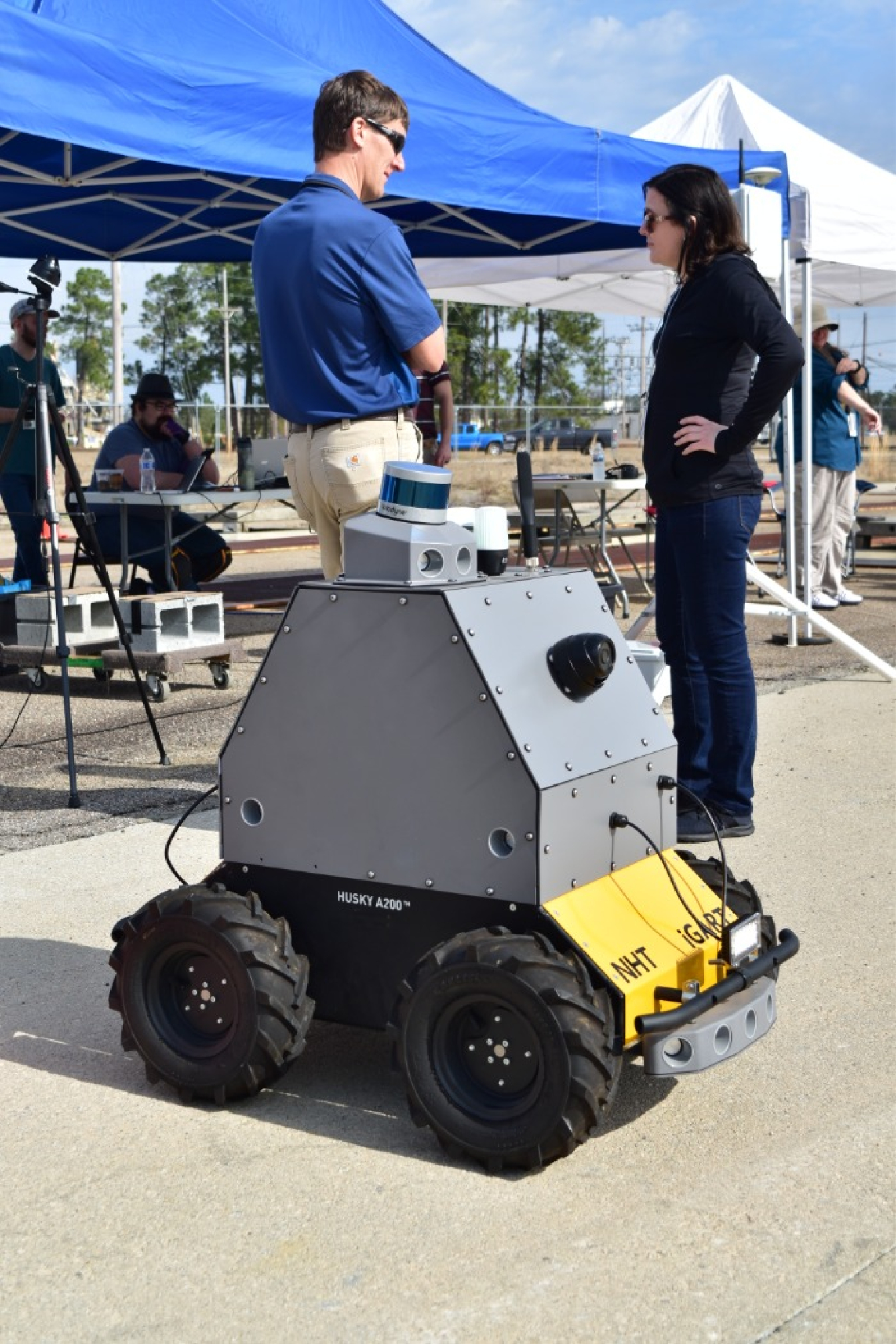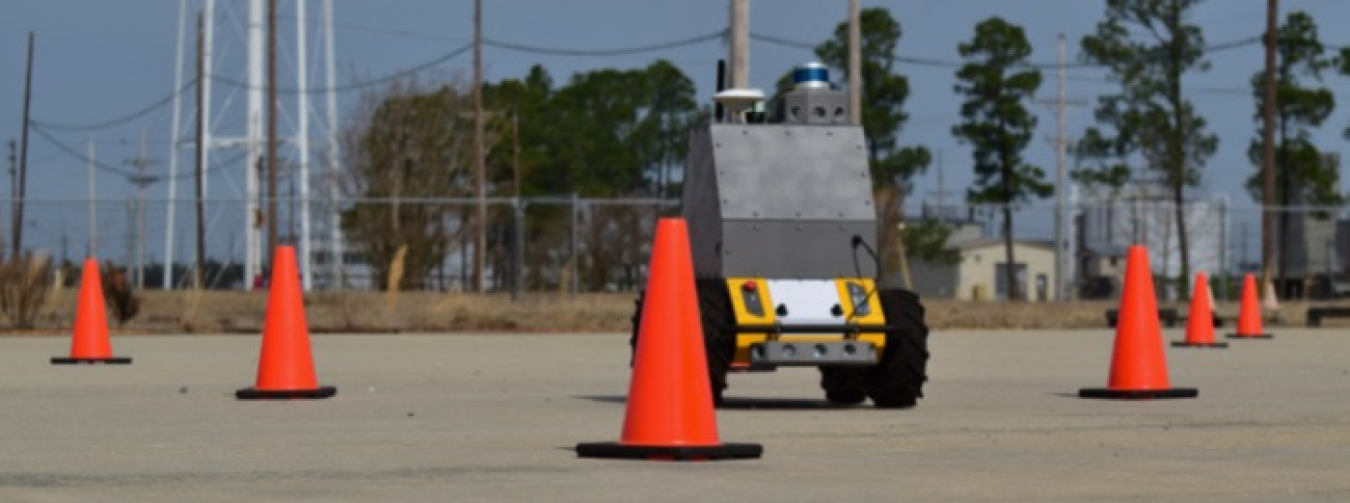Savannah River National Laboratory (SRNL) oversaw the demonstration recently of a new radiological inspection technology called iGART.
Office of Environmental Management
March 29, 2022
AIKEN, S.C. – Savannah River National Laboratory (SRNL) oversaw the demonstration recently of a new radiological inspection technology called iGART.
The Integrated Ground-based Autonomous Agent for Radiological Tracking, or iGART, was developed by NuHorizon Technologies under a small business innovation research grant. EM is using the demonstration at the Savannah River Site (SRS) to determine if there is value for iGART’s use at SRS or other EM sites.
iGART is a system that integrates a commercial off-the-shelf, 4-wheeled, mobile platform, radiation detectors and 3D vision sensors. Working autonomously or by remote control, the robot detects radiological contamination.
“The purpose of iGART is to identify sources of radiological contamination using a location system and a very sophisticated array of sensors,” said Anamary Daniel, vice president of corporate strategy and government program services for Inspection Experts, which assisted EM in evaluating the technology.
Daniel said iGART technology has potential for indoor and outdoor application in the EM cleanup mission.

“Outdoor spaces and large facilities, like the Y-12 National Security Complex at Oak Ridge or any large structure at a DOE site, are very good examples of the application of iGART assisting in characterization surveys,” she said. “Potential benefits of this technology are reduction of worker exposure and efficiency in data collection.”
Daniel continued, “EM has a collaborative, interagency agreement with the Department of Homeland Security (DHS) that enables both agencies to share technological advances that can assist and support in their respective missions. It so happens that DHS sponsored the development of iGART, and this technology has tremendous potential for the Environmental Management mission.”
The technology was conceptualized at one of SRNL’s partner universities, Georgia Tech, making the demonstration at SRS particularly rewarding.

“The idea behind iGART started as a design project in one of the courses and two of the three engineers here were part of the course. The student team designed a small-scale, simplified system which did very well in radiation mapping,” said Anna Erickson, president and CEO of NuHorizon Technologies.
Erickson said it took about five years to get iGART from the classroom idea to the demonstration phase. She also said the robot tested at SRS looks nothing like the conceptual design from the classroom.
“System integration took the bulk of the effort in developing the technology,” said Erickson. “The components (of iGART) may be well known to people, but how to make them talk to each other and work in a coherent manner, this is what was missing.”
To receive the latest news and updates about the Office of Environmental Management, submit your e-mail address.

